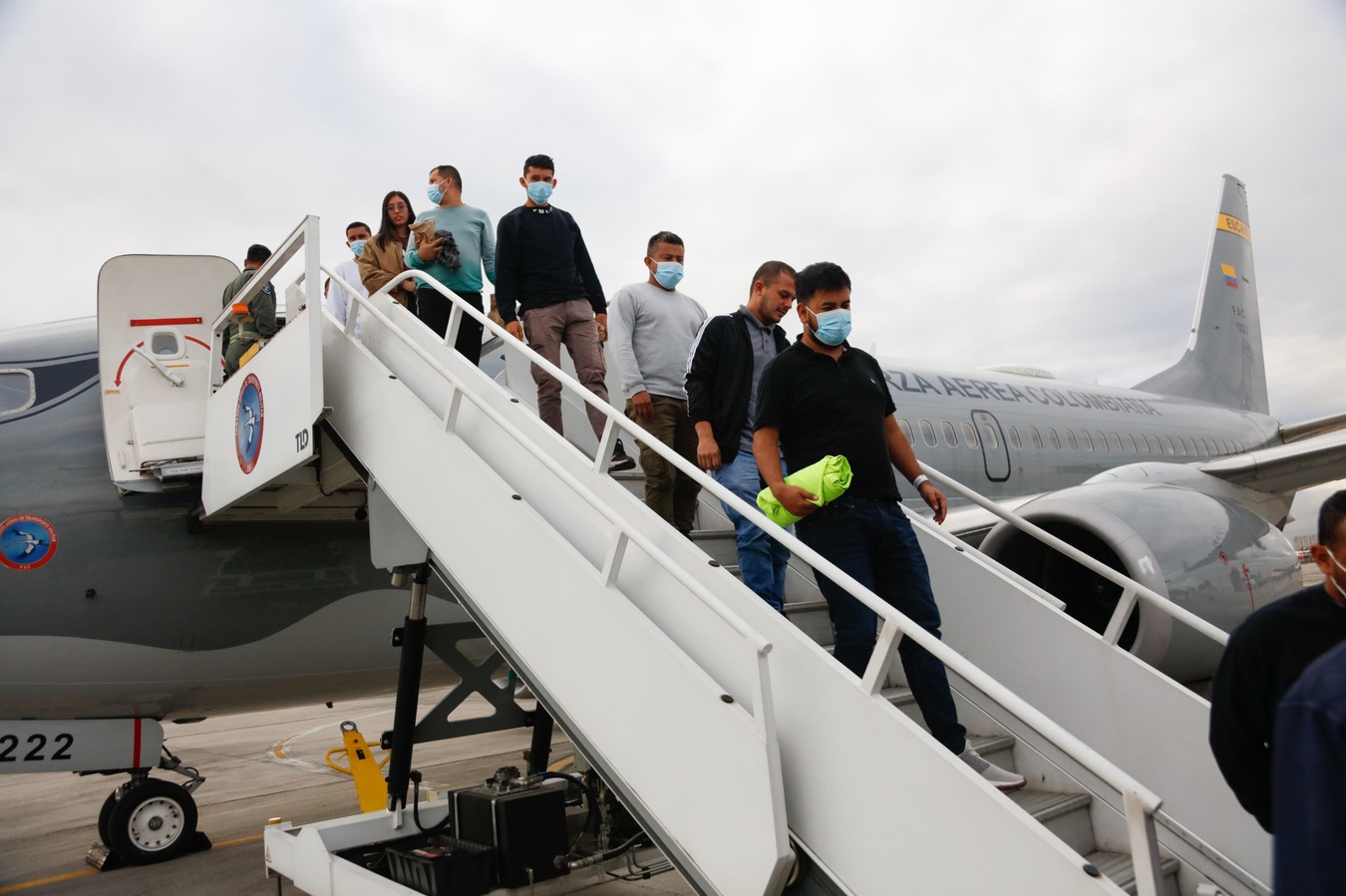Immigrants in the Southeast: Public Perceptions and Integration
Immigrants in the Southeast: Public Perceptions and Integration
The number of immigrants—mostly from Latin America—jumped in southern U.S. states over the past decade and a half. As studies on acculturation rates indicate, southerners' practice of demonizing immigrants because they "refuse to assimilate" can contribute to delays in assimilation, explains Elaine C. Lacy of the University of South Carolina at Aiken.
Between 1865 and 1910, southern growers and industrialists attempted to lure immigrants to the Southeast to replace Black workers and enhance industrial development, but their efforts were hampered by southerners’ rejection of the immigrants who came. Most were southern and eastern Europeans whose swarthiness, Catholicism, lack of English language skills, relative poverty, lack of education, and general “otherness” led many in the south to consider them unassimilatible “scum” who would destroy southern culture and values. Anti-immigrant rhetoric and sporadic violence against immigrants drove many from the region, and in the end, few remained in the South.2
A century later, a new wave of immigrants has entered the South, most from Latin America, and southerners’ reactions are much like those of their forebears. Between 1990 and 2006 the Latino population in six southern states increased by 514 percent while growing by 98 percent in the country as a whole.3 The majority of Latino immigrants are workers from Mexico and Central America who have arrived since the mid-1990s to fill jobs in the construction, manufacturing, poultry processing, landscaping, service, and agricultural industries. During the 1990s, most southerners ignored the newcomers or considered them to be a curiosity, but employers welcomed the inexpensive labor, educators and health care providers struggled to meet new demands, and churches began to organize outreach efforts and to offer English classes.
In the last few years southern attitudes toward the new immigrants, like those in many other parts of the U.S., have shifted. Today many southerners regard Latino immigrants as criminals (conflating the documented and undocumented) who burden the local economy and take jobs from native-born residents, increase crime rates, refuse to adapt to U.S. culture, carry diseases, and pose a threat to southern culture and values.
All southern states have passed legislation aimed at limiting unauthorized immigrants’ access to jobs, housing, healthcare, transportation, and public benefits. Some legislation, like the “English only” laws, affects all those whose English skills are limited. Some lawmakers in the region have made it very clear that their aim is to drive unauthorized immigrants from their areas. As has been demonstrated elsewhere, such attitudes and official responses to immigrants can delay immigrants’ assimilation into new settlement areas.4
What factors most shape public perceptions of immigrants and therefore immigration legislation in the South? I would argue that the following factors are most critical in the region.
- Economic concerns: After several decades of economic growth, a national economic slowdown, increased employment dislocation, growing wealth and income disparities, and a decline in the construction industry have adversely affected the region starting in the early twenty-first century.5 Negative attitudes toward immigrants tend to increase during periods of economic recession and when individuals or groups feel economically threatened.6 It should be noted, however, that the economic impact on the individual has less influence on attitudes toward immigrants than does the perception of negative economic costs associated with increased immigration.7
- Security concerns: The events of September 11, 2001, helped shape public perceptions of the foreign-born and heightened determination to secure U.S. borders.8 In the Southeast, fears that our “open” borders leave us vulnerable are commonplace.
- Pervasiveness of anti-immigrant attitudes nationwide: Political campaigns, Internet blogs and chat rooms, and radio and TV talk shows have made immigration—particularly illegal immigration—a highly-charged national issue.
- Inter-ethnic tensions: Latino-African American tensions have increased, largely due to competition for jobs and housing. Blacks’ tend to perceive that immigrants depress wages and siphon off funding for social programs at the same time that frustration mounts over language barriers and other cultural differences.
- Fear of cultural change: The public discourse related to immigration in the Southeast reveals a widespread fear of cultural change and a perception that local cultural unity will be destroyed as result of what some call the Latino “invasion.” A Georgia resident said that immigrants “threaten everything that matters,” and worried that white southerners would soon be outnumbered and irrelevant.9 A South Carolina man said, “Folks who have lived here their entire lives . . . are concerned about how their community is changing, and they don’t have any control over it.”10 A 2001 Georgia poll revealed more anti-immigrant attitudes among longer-term residents of the state, who can be more sensitive to change and “have a more developed sense of what the surrounding community ‘ought’ to look like.”11
A 2007 study by the Pew Hispanic Center reveals that an increasing proportion of recent Latino immigrants say they or someone they know has experienced discrimination, and 64 percent of Latinos surveyed said that the national debate over immigration has made life more difficult for Hispanics in the U.S.12 Studies have demonstrated that immigrants who are marginalized and face discrimination become acculturated at a slower rate and in a different manner than do those who are more accepted.13 So ironically, southerners’ practice of demonizing immigrants because they “refuse to assimilate” can contribute to delays in assimilation.
Elaine C. Lacy is professor of history and assistant to the executive vice chancellor for academic affairs at the University of South Carolina at Aiken.
1Aristide R. Zolberg, A Nation by Design: Immigration Policy in the Fashioning of
2Rowland T. Berthoff, “Southern Attitudes Toward Immigration, 1864-1914” Journal of Southern History 17 (August 1951): 328-360.
3The states include Arkansas, Alabama, Georgia, North Carolina, South Carolina, and Tennessee. U.S. Bureau of the Census, Decennial Census 1990; U.S. Bureau of the Census, American Community Survey 2007.
4International Migration Review, Vol. 31, No. 4, Special Issue: Immigrant Adaptation and Native-Born Responses in the Making of Americans. (Winter, 1997).
5The State of the South, 15; US Department of Labor, Bureau of Labor Statistics. Available at http://www.bls.gov/.
6Portes, “Migration and Underdevelopment,’’ Politics and Society (1978) 8:1–48; George Sanchez, “Face the Nation: Race, Immigration and the Rise of Nativism in Late Twentieth Century America,” International Migration Review 31 (Winter 97): 1009-1030; Higham, John. Strangers in the Land: Patterns of American Nativism, 1860-1925 (New Brunswick: Rutgers University Press, 2002).
7Burns and Gimpel; Micki Neal and Stephanie A. Bohon, “The Dixie Diaspora: Attitudes Toward Immigrants in
8John S. Lapinski, Pia Peltola, Greg Shaw and Alan Yang, “The Polls-Trends, Immigrants and Immigration,” The Public Opinion Quarterly 61 (Summer, 1997): 356-383; Poll results from 2004 conducted by National Public Radio, the Kaiser Family Foundation, and Harvard’s Kennedy School of Government. The report is available at http://www.kff.org/kaiserpolls/upload/Immigration-in-America-Summary.pdf
9Rachel L. Swarns, “In
10Noelle Phillips, “New Town,
11Micki Neal and Stephanie A. Bohon, “The Dixie Diaspora: Attitudes toward Immigrants in
12Pew Hispanic Center, “2007 National Survey of Latinos: As Illegal Immigration Issue Heats Up, Hispanics Feel a Chill.” Available at http://pewhispanic.org/files/reports/84.pdf.
13Richard Alba, “Immigration and the American Realities of Assimilation and Multiculturalism,” Sociological Forum 14 (Mar., 1999), 3-25; Ruben G. Rumbaut, “Assimilation and its Discontents: Between Rhetoric and Reality,” International Migration Review 31 (Winter 1997): 923-960; Richard Alba and Victor Nee, “Rethinking Assimilation Theory for a New Era of Immigration,” International Migration Review 31 (Winter 1997): 826-874; Min Zhou, “Segmented Assimilation: Issues, Controversies, and Recent Research on the New Second Generation,” International Migration Review 31 (Winter 1997): 975-1008; Susan K. Brown and Frank Bean, “New Immigrants, New Models of Assimilation,” in “The Second Generation,” Migration Policy Institute (Washington, DC, 2006).








